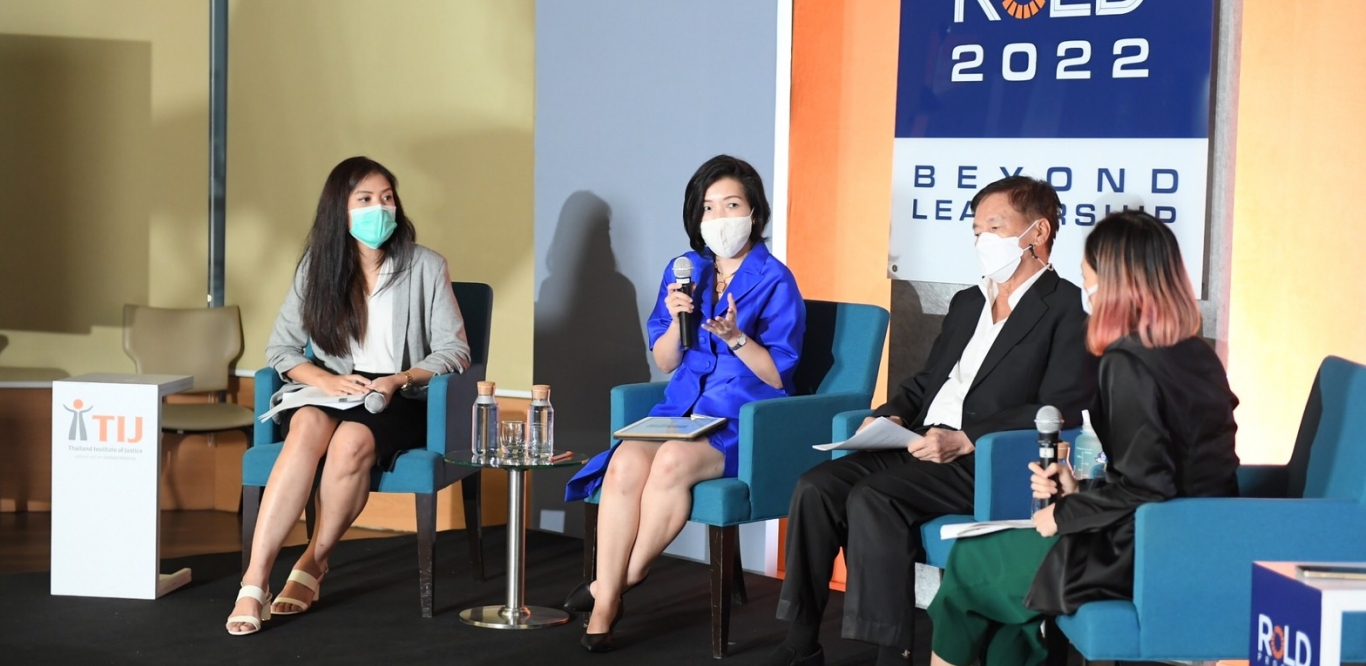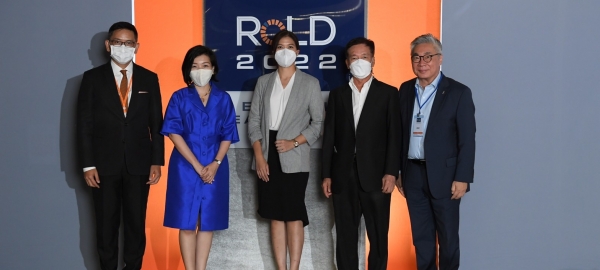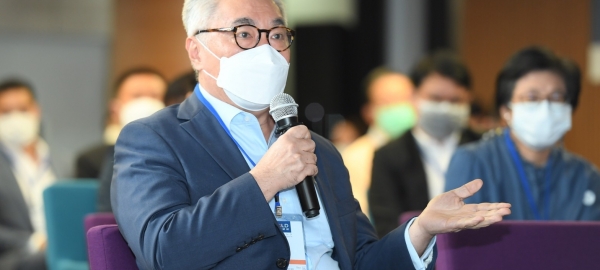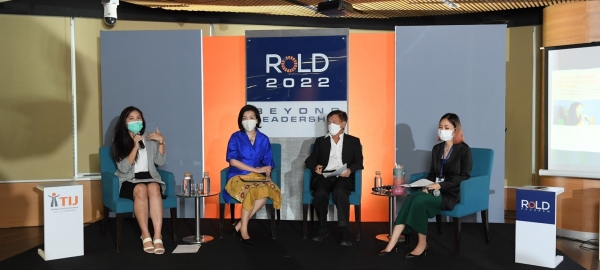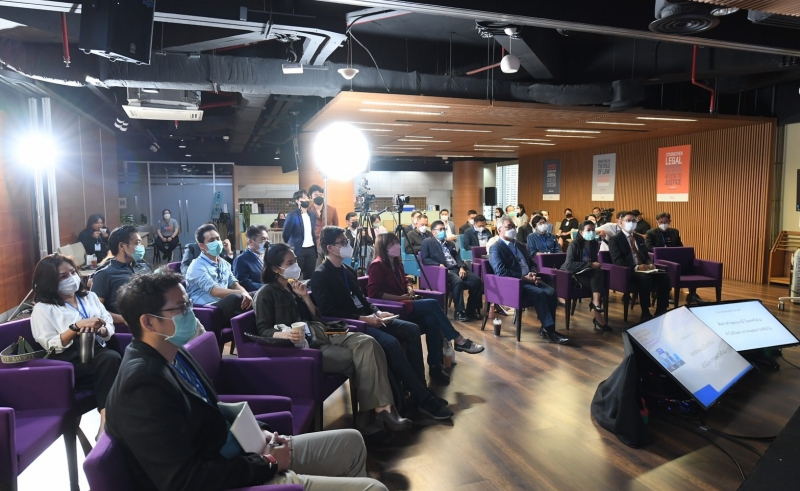“Protect, Friendly, Not blaming, No repeated questioning” – Recommendation to the judicial process on treatment of victims of sexual violence
“Sexual Violence” has become the issue of widespread discussion in Thai society, resulting from a series of incidents. Particularly, the “response of the judicial process” has faced an essential question on its efficiency to truly delivering justice to the victims of sexual violence. This dialogue led to the organization of a panel discussion on Domestic Violence, Sexual Harassment and Rape: Rehumanizing the Justice System through Stakeholders’ Experience, as part of the 2022 Rule of Law and Development (RoLD): Beyond Leadership, hosted by Thailand Institute of Justice (TIJ).
There is no perfect victim and no perfect abuser in a sexual violence case, unlike the stereotype played out in the media.
Busayapa Srisompong, human rights lawyer and researcher on domestic violence and founder of Shero Thailand, shared her experience on assisting victims of sexual violence. She highlighted that she had encountered cases with victims of domestic violence or intimate partner violence. These cases involved sexual violence and harassment, as well as online harassment, stalking and rape. In the past, she would share with the victims on how to file a police report, and explain the steps to them. But such assistance lacked trauma-informed care which is the process or caseworkers that understand how the incident can emotionally and mentally affect the victims. If the judicial process takes into account this element, questions will be carefully designed, no blaming, and no repeating questions will be asked. Some may say that trauma-informed care exists in Thailand, but it really does not.
“Why is it so difficult to report a crime? Because the victim-blaming culture will come into play from the start. Whenever there is a victim speaking out about sexual violence, questions from the society will be “Why did you go with him? Why did you dress like that? But there are no questions asked to the abuser. The society can unknowingly oppress the victim with these questions. So, when the victim enters the judicial process, the victim will have to repeat the story for fear of being blamed. He or she will feel that it is very difficult to prove that they are a victim.” said Busayapa.
The founder of Shero highlighted that the ‘Why Question’ culture imposed against the victim is a contributing factor preventing the victim from reporting the crime. The society exercises victim-blaming culture without knowing that this is wrong and that it oppresses the victim. When a victim is reaching out for consultation, the victim has to live with the fear of being blamed. This is why lawyers have to train officers in the judicial process to be good listeners. Officers have to provide a safe space for the victims, listen in a non-judgmental way and with an open mind, and allow the victims to share without fear of victim-blaming because the victim is already blaming him/herself for what happened.
The victim also has to carry the burden of proof, both in the society and the judicial process. This is another issue emphasized by Busayapa that a new understanding needs to be established. In the past, Thai society is living with a wrong understanding because the media paint a single-dimensional picture of the victim and abuser. That stems the belief that the victim has to resist and struggle while the abuser is often a poor, a drunk, or an addict which is not always the case.
“In the real world, there is no perfect victim, the victim who comes to report the crime in a visibly assaulted stage. We also found that one-third of sexual violence incidents are caused by someone known to the victims. In some cases, there was almost no injury, some victims had gone frozen, they did not put up a fight or struggle. They lost the ability to form logical thinking as well. But once they enter the judicial process, the first question asked will be “Why was there no injury? Why didn’t you fight back? Did you not collect evidence immediately after the incident?” Especially if the abuser is not a perfect offender, someone who gives the impression of a bad person, but instead a good-looking and socially well-off person. Then the statement of the victim will be weakened, when in fact there is no perfect victim and abuser.”
In terms of the motive of sexual violence and sexual harassment, Busayapa shared from her experience that it is not solely based on sexual needs. There are factors like the joy of overpowering another person. The higher the superiority, the higher chance of abuse. Therefore, sexual violence is actually an abuse of power. It should not be concluded that sexual violence is related to substance abuse because some abusers do not have to use substances to exercise power over the victim.
“If we look back, there is a problem with the society. If we allow some touching, the abuser will feel entitled for more. If there is no specific rule against such action or if the abuser has the power to silence the victim, he/she will attempt to commit a crime until he/she gets to the tip of the pyramid of crime which is rape. Normalizing sexual harassment is, in essence, allowing sexual harassment to happen.”
Busayapa recommended that knowledge should be shared to change the ideology of the society towards victims of sexual violence, starting from the micro-level, i.e., family, community, or school. Different contexts of each area need to be considered for different strategic determination for the change of the behavior and the society.
Victims of sexual violence have to endure significant oppression and pressure if they are to enter the judicial process
Statistical facts reveal that there are more than 10,000 cases of sexual violence against women that enter the public health system each year. But only a hundred or so reached the judicial process and even fewer reach the prosecution stage in court. Kohnwilai Teppunkunngam, analyst of UN Women’s End Violence against Women Project and Safe and Fair Project, shared that from the insight data there are many other women who refrained from asking for help when they became victims of sexual violence. Because there are major hindrances that prevent these women from speaking out, including the ideology of the Thai society, as well as the steps involved in the judicial process.
“The obstacles that these women have to face can be compared to a very thick wall, laid down with layers of bricks. Each layer represents different difficulty. The very first layer represents the patriarchy culture and the restrictive societal values that tell women how to act. The next layer represents the society’s requirement for women to be untainted. Questions such as “Did you dress too revealing? Why did you go there alone? Why were you alone with the abuser?” will be asked. Victims have to be traumatized from fear of stigmatization. That leads to self-stigmatization in some, while others may suffer from post-traumatic stress disorder (PTSD). Some may fear sexual transmitted infections while others can be suicidal.”, provided Kohnwilai.
Kohnwilai provided that the top layers of bricks that are weighing down the victims of sexual violence is caused by the “Abuser” in the “Superior” position. Often times, the victims were threatened to keep their silence, deceived, and exploited. The highest layer of the bricks is the judicial process, in which the fact-finding process is reproducing violence against the victims. Victims are repeatedly asked questions about the incident and have to carry the burden of proof.
“We can see that if a woman who is a victim of sexual violence decides to enter the judicial process, she will encounter high level of hardship. If she wants to report a rape, she will not be able to avoid the ideology imposed by state officials or the society. They will seek traces of violence, injuries, self-defense wounds and other evidence. Even though there are many pieces of research that confirm that the response to threats of each individual is different. If the woman decides to report a case long after the incident, she will be asked why it took so long to report the crime. This is only part of the bricks of the judicial process that are weighing down the victims.”, said Kohnwilai.
Kohnwilai emphasized that the problem in the response of the judicial process in cases of sexual violence have to be solved as a matter of urgency. A number of recommended principles were mentioned, i.e., the judicial process has to take a victim-centered approach; victims should have the rights to make their own decisions on how to proceed; safety of the victims must be the priority; the burden of proof should be carried by the state officials instead of the victims; and the burden of responsibility shall be borne by the abuser, not by paying or marrying the victims, but to be conscience-stricken, to compensate and remedy the victim and to be penalized.
To make this a reality, extensive revision of the legislations and process are required. The laws have to criminalize all types of sexual harassments, whether in a workplace or elsewhere, including stalking and online harassment.
Change of Perspective, Protect the Victims, Expose the Abusers
Wanchai Roujanavong, Thai representative from ASEAN Commission on the Promotion and Protection of the Rights of Women, shared that to prosecute cases of violence, sexual harassment, or rape, there are two challenges in the judicial system or structure. Firstly, women who are victims are required, for a number of times, to repeat their accounts. The first time, the victims might share with someone close to them to decide whether to prosecute. But once they enter the reporting process, they will be interviewed very unempathetically and thoroughly by the police officers. When they are testifying in court, the defense lawyer will examine their stories in every single detail in the presence of many other people in order to confute the testimony of the victims. In a sexual violence case, if the victim is over 18 years old, the closed hearing system will not be available, unlike in juvenile cases. At the same time, the legal system needs solid and sufficient evidence to prove that the accused is guilty and to render conviction as such. By taking a careful approach in the cases of this nature, the victim may have the impression that the judicial process is unfriendly and unsafe.
“Actors in the judicial process have not been trained to empathize with the victims. The center of the process is on the abuser and not the victims. This approach is universal, not only applied to cases of rape. Therefore, when a case is reported to the police, you will not be informed of its progress. We do not have victim-friendly procedure which looks after the victim, unlike the juvenile cases where social workers will play a role in the judicial process. Hence, we need to establish the system to assist the victims so that they can speak up. We need to protect and allow them to share their stories without being exposed. There needs to be a confidentiality system.”
The second challenge is the psychological nature of rape cases. Wanchai revealed that, according to research, the abusers in rape cases are mostly someone known to the victims, rather than strangers. The abusers will play out a scenario in their minds before identifying the gap to strike. This makes it even more difficult for the victim to press charges. Another consideration is that, if the victims press charges, their photos, names, and other identifications will appear in the news, and people within their circles or workplaces will know that they were raped. This is particularly difficult for married victims; they have to worry whether or not their spouses will be able to accept if the stories are published.
“After reporting to the police and the case goes into the system, it is out of your control. It will have to follow the process, you can no longer back away. More importantly, in most rape cases, the abusers and victims were alone during the incident, hence, the lack of eyewitnesses. So, when one person claimed that he/she was raped and the other party said otherwise, who should the court listen to? Keeping in mind that the decision is to put a person away in prison for 20 years. Therefore, circumstantial evidence is significant, particularly so for cases where many victims are filing against the same abuser. The judicial process should focus on exposing the abusers rather than questioning the victims.”
Wanchai concluded by asking the audience to consider whether the rape culture exists in Thai society, taking into account that the culture of victim-blaming and victim humiliation do exist, as well as a judgmental attitude against the victims and abusers without sufficient contextual awareness. The judicial process should design victim-centered hearing procedures. Even though such system may not be fully launched as of now, certain aspects may be implemented for the time being, i.e., the confidentiality of the victims or having in place the law that prohibits disclosure of the victims’ personal information without consent, etc. The approach can also be implemented for cases involving members of the LGBT community, as supported by the removal of the gender-specific terms from Thai law, replaced by “a person who rapes another…”.
“These abuses are caused by not perceiving another as equal. If people respect one another as equal, none of this would have occurred. Harassment through Line messages is dehumanizing women. When women can be harassed, they can be raped. This is social objectification against women.”



